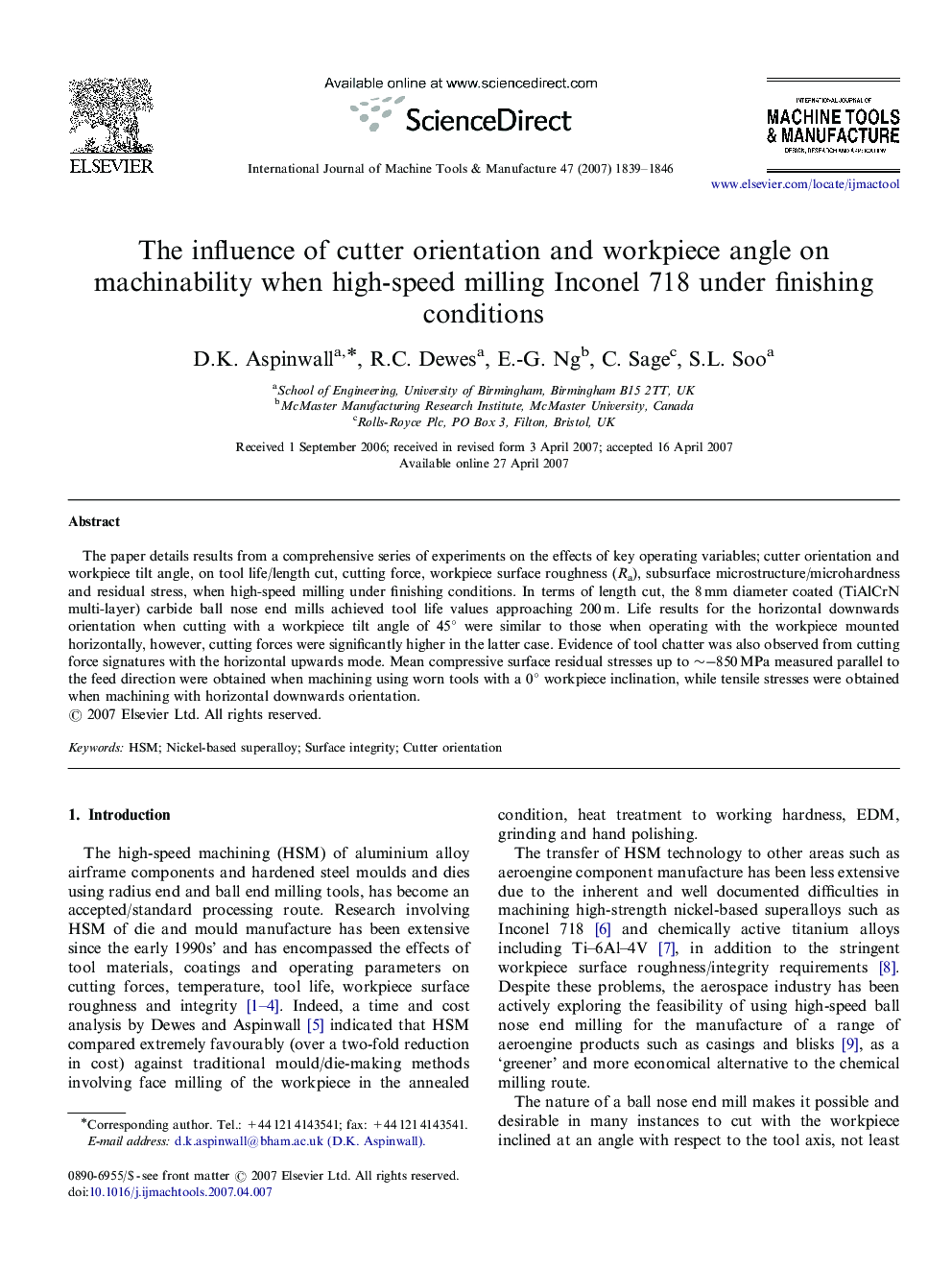| Article ID | Journal | Published Year | Pages | File Type |
|---|---|---|---|---|
| 779038 | International Journal of Machine Tools and Manufacture | 2007 | 8 Pages |
The paper details results from a comprehensive series of experiments on the effects of key operating variables; cutter orientation and workpiece tilt angle, on tool life/length cut, cutting force, workpiece surface roughness (Ra), subsurface microstructure/microhardness and residual stress, when high-speed milling under finishing conditions. In terms of length cut, the 8 mm diameter coated (TiAlCrN multi-layer) carbide ball nose end mills achieved tool life values approaching 200 m. Life results for the horizontal downwards orientation when cutting with a workpiece tilt angle of 45° were similar to those when operating with the workpiece mounted horizontally, however, cutting forces were significantly higher in the latter case. Evidence of tool chatter was also observed from cutting force signatures with the horizontal upwards mode. Mean compressive surface residual stresses up to ∼−850 MPa measured parallel to the feed direction were obtained when machining using worn tools with a 0° workpiece inclination, while tensile stresses were obtained when machining with horizontal downwards orientation.
